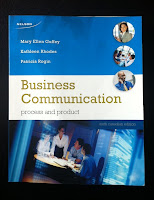As I stated in my previous post I am going to summarise the Tech Talk discussion in our text on “Going Global with a Culturally Customized Website”. I feel it would be best to get it out of the way as it will tie into all my future posts. The following are important things one must consider when building a culturally customized website as stated in Business Communications: Process and Product (sixth edition):
· Learn the Local
Lingo: why? For example different countries have
developed different web jargon i.e. homepage in in French is “page d’accueil”
which is actually translated welcome page. Just as in Spanish the homepage is
referred to as the initial page “pagina inicial” so:
o
Do
not simply translate English words page by page
o
And
hirer a proficient translator or work with
a local developer
·
Check Icons: different countries also have different iconography
for example North Americans recognize the mailbox icon whereas in Europe it is
the envelope. To avoid confusion:
o
Test
images with local residence
·
Relax
Restrictions on Consistency: the main site
for McDonalds includes the golden arches, Ronald McDonald and a red background.
However the Japanese site has softer colours to appeal to the Asian culture. This
is because McDonalds understands a cookie cutter site will not appeal to
all cultures so:
o
Allow
flexibility to meet local tastes.
·
Keep the Message
Simple:
o
Use simple easily translated words even if the
site is in English.
o
Avoid
using slang, jargon, abbreviations, or vague expressions.
·
Customize Web content
for High-Context Cultures (i.e. Japan
& China):
o
Include
words reflecting politeness and use indirect expressions
o
Include
animated images (cartoon characters)
o
Use a soft sell approach appealing to harmony
·
Customize Web
Content for Low-Context Cultures (i.e. North America & Germany):
o
Use
product comparisons to highlight product advantages
o
Include
aggressive promotions and discounts
o
Display
return policies, guarantees and purchase conditions.
Source:
Business Communication: Process and Product, 6th Cdn. Edition
